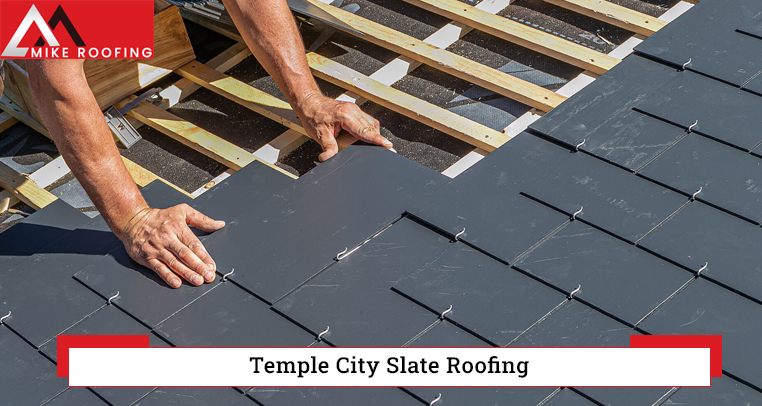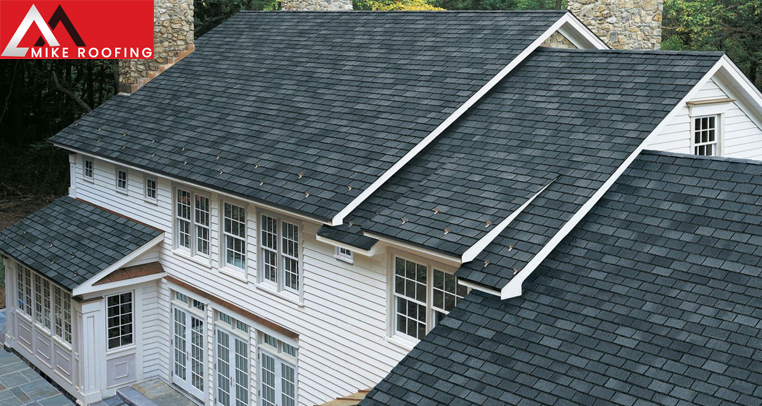Temple City Slate Roofing
Elevate your home’s aesthetic and durability with slate roofing, a timeless and resilient choice that blends sophistication with superior protection. Discover the enduring beauty and unmatched longevity of Temple City Slate Roofing, expertly crafted to withstand the elements and enhance your property’s curb appeal.
Our team of skilled professionals is dedicated to guiding you through every step of the slate roofing process, from selecting the perfect style and color to ensuring a flawless installation. Trust us to bring your vision to life with seamless execution and unparalleled craftsmanship.

Benefits of Choosing Slate Roofing
Slate roofing is a timeless and luxurious choice that offers numerous advantages for homeowners. Its natural beauty, exceptional durability, and low maintenance requirements make it a highly sought-after roofing option. Here are some key benefits of choosing slate roofing:
Durability and Longevity
Slate is one of the most durable roofing materials available, with an average lifespan of 60 to 200 years, depending on the quality and thickness of the slate.
Fire Resistance
Slate is a non-combustible material, making it highly resistant to fire, which can provide peace of mind and potential insurance discounts.
Low Maintenance
Slate roofs require minimal maintenance, as the material is highly resistant to mold, rot, and insect damage, reducing the need for frequent repairs or replacements.
Aesthetic Appeal
Slate offers a unique and elegant appearance, with a range of natural colors and textures that can enhance the character and curb appeal of any home.
Eco-Friendly
Slate is a natural and sustainable material, making it an environmentally friendly choice for roofing projects.
Types of Slate Roofing
Slate roofing comes in various types, each offering distinct characteristics and benefits. Here’s an overview of the different types of slate roofing:
| Type of Slate | Description |
|---|---|
| Standard Slate | The most common and affordable type, suitable for most residential and commercial applications. |
| Texture Slate | Features a distinctive texture or pattern, adding visual interest and character to the roof. |
| Graduated Slate | Slates of varying thicknesses and sizes, creating a unique and dynamic appearance. |
| Specialty Slate | Includes rare or exotic slate varieties, often with unique colors or properties. |
When selecting the type of slate roofing, consider factors such as your budget, desired aesthetic, and the local climate conditions to ensure optimal performance and longevity.
The Installation Process of Slate Roofing
Installing a slate roof is a meticulous and skilled process that requires the expertise of professional roofers. Here’s a general overview of the installation process:
- Site Preparation: The roof deck is inspected and prepared, ensuring it is structurally sound and properly ventilated to support the weight and longevity of the slate roof.
- Underlayment Installation: A specialized underlayment or roofing felt is installed to provide an additional layer of protection and enhance the roof’s waterproofing capabilities.
- Slate Cutting and Trimming: Individual slate tiles are carefully cut, trimmed, and shaped to fit the specific roof design and accommodate features like valleys, hips, and ridges.
- Slate Installation: The slate tiles are meticulously installed row by row, with each tile overlapping the course below it and secured with appropriate fasteners or nails.
- Flashing and Waterproofing: Critical areas like chimneys, skylights, and valleys are properly flashed and sealed to prevent water infiltration and ensure the roof’s overall integrity.
- Ridge and Hip Capping: Specialized slate tiles or metal ridges are installed along the roof’s peaks and hips, providing a finished and aesthetically pleasing look.
Innovations in Slate Roofing Technology
While slate roofing has a rich history, the industry continues to evolve with innovative technologies and techniques that enhance the performance, durability, and efficiency of slate roofs:
- Lightweight Slate: Advancements in manufacturing processes have led to the development of lightweight slate options, which offer the same aesthetic appeal as traditional slate while reducing the overall weight and installation challenges.
- Solar-Reflective Coatings: Some slate varieties now feature special coatings or finishes that reflect solar radiation, improving the roof’s energy efficiency and reducing cooling costs.
- Recycled and Synthetic Slate: To address sustainability concerns, manufacturers are exploring the use of recycled materials and synthetic alternatives that mimic the appearance of natural slate while offering enhanced durability and affordability.
- Advanced Waterproofing Systems: New waterproofing membranes and underlayment materials are being developed to provide superior moisture protection and extend the lifespan of slate roofs.
- Improved Fastening Systems: Innovative fastening systems, including specialized nails, clips, and adhesives, ensure a secure and long-lasting installation of slate tiles, reducing the risk of wind and weather damage.

Navigating Local Regulations in Slate Roofing
When considering a slate roofing project, it’s essential to understand and comply with local building codes and regulations. Here are some key aspects to consider:
- Permitting Requirements: Many jurisdictions require permits for roofing projects, particularly those involving structural changes or the use of specialized materials like slate.
- Building Codes: Local building codes may have specific requirements for slate roofing installations, such as minimum slope angles, ventilation specifications, and fastening methods.
- Historic District Regulations: If your property is located in a historic district, additional guidelines and restrictions may apply to maintain the area’s architectural integrity and aesthetic.
- Homeowners Association (HOA) Rules: If applicable, review your HOA’s guidelines and obtain necessary approvals before proceeding with a slate roofing project.
- Environmental Regulations: Certain areas may have regulations regarding the sourcing, disposal, or recycling of slate roofing materials to minimize environmental impact.


